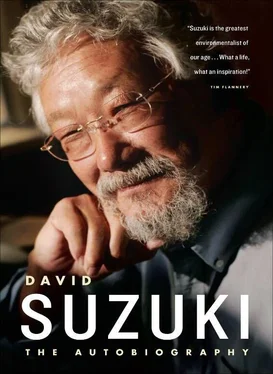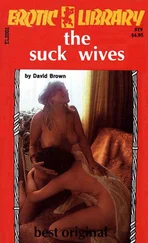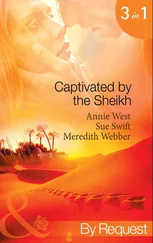When the court wouldn't budge, Paiakan simply told the warriors they were leaving. He said that if the government wanted to try them, it would have to go to Aucre and get them. The Kaiapo men threw their drumming sticks onto the road, boarded the buses, and left without any interference from the soldiers. I picked up two sticks, which I still have as souvenirs of that encounter.
But no government officials would dare try to fly into the remote village, where they would be completely vulnerable. The case was eventually dropped because of the absurdity of the original charges.
EIGHT
PROTECTING PAIAKAN'S FOREST HOME
IN FEBRUARY 1989, we had arranged for air tickets so that Paiakan could come to North America. After a brief stop in Chicago, where he was a guest of Terry Turner, a physical anthropologist at the University of Chicago, Paiakan flew to Toronto for our concert to raise funds for the protest to be staged at Altamira. Our translator was Barbara Zimmerman, a young Canadian herpetologist who was working in the Amazon.
Tara had an audacious idea — why not invite the major multinational companies that did business in the Amazon to attend a reception before the concert to meet Paiakan in person and, in return, to donate a thousand dollars? We would be asking companies that were destroying the rain forest to give money to someone fighting to protect it. We drew up a list of eighteen companies, from American Express to the Bank of Japan, and I called the Toronto head of each company to extend the invitation.
The Toronto reception was a gala event. The Elmwood Club donated its elegant premises and exquisite Thai food. The CBC filmed the arrival of the hosts — me, Paiakan, the Canadian writer Margaret Atwood, and Gordon Lightfoot — and the well-heeled guests. Of the eighteen companies, all but one sent a representative with a check. In one hour, we raised $16,500. That was a lot in the eighties. The only exception was the Bank of Japan. I had called the president, identified myself, and said, “I understand you have interests in Brazil and thought you would like to meet an Indian leader from the Amazon.” After a considerable pause, he replied, “We have interests in Brazil, but we do not have interest in Indians.”
The main event that night was the concert at St. Paul's Cathedral on Bloor Street. Dozens of volunteers had put up posters advertising it; when we got to the church, I was astounded to see a lineup extending around the block. More than three thousand people jammed that church, and the atmosphere was electric. A stellar list of people had agreed to appear: Margaret Atwood read a poem, and Gordon Light-foot and a hot a cappella group, the Nylons, sang. The World Wildlife Fund had the terrific idea of selling certificates to “Guardians of the Rainforest” for twenty dollars a pop.
Ojibwa drummers sang, and then Gladys Kidd, an Ojibwa elder, addressed the crowd but looked directly at Paiakan: “The terrible thing that's happening is what we call raping the Earth. We had that happen here to us too. We do the best we can. I say that to you because I feel with my heart how it must be for you. The animals can live without us, but we cannot live without the animals. Give strength to one another, to our Kaiapo brothers, in your prayers tonight. In all the hall today you see the change come that they too can have peace in their hearts towards what is happening to them now — it will not happen if they work together. Meegwetch.”
Paiakan appeared onstage in a shirt and pants, but his face was painted and he wore a brilliantly colored feather headdress. He looked spectacular. The grand room went silent as he spoke about his forest home, which had supported his people for so long; the threat the dam posed, and his need for our help. It was an incredible evening, and when it was over, we had raised more than $50,000.
We went on the next day to Ottawa and another gala event. Elizabeth May gave a brilliant speech, and once more Gordon Lightfoot performed. This time, he promised Paiakan he would go to the Amazon and sing for him. In Ottawa we also could try to exert pressure on government. Canada was a voting member of the World Bank, and we wanted our delegate, federal finance minister Michael Wilson, to vote against World Bank loans for destructive projects such as the dam.
At a press conference with Paiakan, a reporter asked, “Why do you wear feathers and paint?” Paiakan calmly retorted, “Why are you wearing a tie?” He knew what he was doing. The Globe and Mail in Toronto, the Ottawa Citizen , and the Toronto Star newspapers all featured color photos on their front pages. Michael Wilson got the message — he later told people he had received more mail and calls about the Amazon and World Bank loans than about any other issue in which he was involved. The Canadian public had responded magnificently.
By the time Paiakan left, after only a couple of days in Canada, we had raised $70,000. Cynics might say it was just the novelty and glamor of an Indian from the Amazon that prompted such support, or merely a response to assuage our own guilt about what we had done to First Nations. If that is true, I don't have a problem with it. But I also think the notion of the great rain forest filled with amazing creatures and people lifted our spirits and made us want to be part of its protection.
The Nature of Things program was broadcast as a two-hour special entitled “Amazonas — The Road to the End of the Forest,” and it garnered a huge audience. The public's concern about the issue was building. Now the Altamira dam showdown was looming, and Tara began the difficult task of arranging our own trip all the way to Altamira, a frontier town deep in the Xingu valley of the Amazon. But Paiakan's visit had created enormous interest in the battle, and soon people were calling us to see whether we were going and then asking whether they could tag along. Before she knew it, Tara was juggling the logistics of travel, housing, malaria pills, shots, lists of what to take and wear — an enormous undertaking — for forty people! One of her priorities was to learn Portuguese to be able to pull the trip off.
We had a virtual who's who of the Canadian environmental movement traveling with us, including Elizabeth May of the Sierra Club, Peggy Dover of the World Wildlife Fund, Paul Watson of the Sea Shepherd Conservation Society, Jeff Gibbs of the Environmental Youth Alliance, Peggy Hallward of Energy Probe, Gordon Lightfoot making good on his promise, Guujaaw of Haida Gwaii, and Simon Dick, a Kwagiulth from Kingcome Inlet.
The British Columbia contingent flew to Toronto, where we met up with the eastern folk. At the airport we also met Rosie Mosquito, an Ojibwa-Cree from northern Ontario, and when we changed our plane in Miami, we were joined by Phil Awashish, the Quebec Cree who had become a hero when he learned of and sounded the alarm about Hydro-Quebec's plan to flood Cree territory.
We flew into Manaus, the Amazonian town that had flourished during the rubber boom early in the last century. We landed in the middle of the night and took taxis to our inexpensive hotel downtown, where we registered two to a room. We were all exhausted, but I was so impressed with Gordon Lightfoot. Here was a superstar who had his own jet to fly from gig to gig. I am sure he was accustomed to going to the airport in a limo and used to being taken care of, but here he was, one of the gang. A young man said to him, “Gord, you're bunking with so-and-so and there's your bag and here's your key,” and Gordon hauled his luggage without complaint.
The next morning, Tara had arranged for us to visit the research station where Tom Lovejoy had studied the effect of forest area on the maintenance of biodiversity. It was called the Forest Fragments Project, a collaboration between the Smithsonian Institution in Washington, D.C., and Brazil's Insititute for Research in the Amazon. Lovejoy had made an inventory of the plant and animal species in plots of intact forest of one hectare, ten hectares, a hundred hectares, a thousand hectares, and ten thousand hectares, surrounded by cleared land, and then followed their fate over time. He found there was a direct correlation between size and biodiversity — the smaller the area, the fewer the surviving species — and that the rate of loss was inversely proportional — the smaller the plot, the faster the loss of species. His studies demonstrated that if biodiversity is to be maintained, very large tracts of wilderness must be preserved.
Читать дальше


![David Jagusson - Devot & Anal [Hardcore BDSM]](/books/485905/david-jagusson-devot-anal-hardcore-bdsm-thumb.webp)









